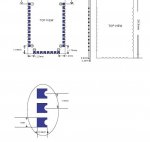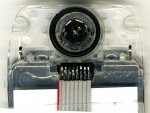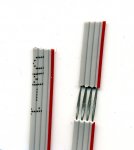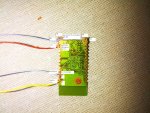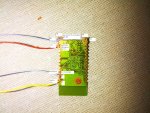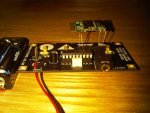slimplynth
Senior Member
Hello
Nervously about to attempt to solder connections to one (spare tester) of these...
http://www.sure-electronics.net/rf,audio/GP-GC021_Ver1.0_EN.pdf
picture on pg. 4
(nervous because 13 quid seems like a bad omen)
If anyone is interested in doing the same I became aware of these units from...
http://hackaday.com/tag/gp-gc021/ Using the circuit diagram linked...

I've never done any surface mount soldering.. I've googled a bit (relatively) the tutorials are aimed at soldering smd chips that have legs, albeit smaller than the picaxe etc im used to.
The current plan, because its for the blimp is to don my magnifying headset and kynar/solder the necessary connections. This may work if i manage a clean job...
The bluetooth RC car project page...
http://uzzors2k.4hv.org/index.php?page=blucar
photo's show what his finished board looks like
I was hoping someone could give me advice, thank you.. please.. or shall i just forge ahead an use the Kynar.
Nervously about to attempt to solder connections to one (spare tester) of these...
http://www.sure-electronics.net/rf,audio/GP-GC021_Ver1.0_EN.pdf
picture on pg. 4
(nervous because 13 quid seems like a bad omen)
If anyone is interested in doing the same I became aware of these units from...
http://hackaday.com/tag/gp-gc021/ Using the circuit diagram linked...
I've never done any surface mount soldering.. I've googled a bit (relatively) the tutorials are aimed at soldering smd chips that have legs, albeit smaller than the picaxe etc im used to.
The current plan, because its for the blimp is to don my magnifying headset and kynar/solder the necessary connections. This may work if i manage a clean job...
The bluetooth RC car project page...
http://uzzors2k.4hv.org/index.php?page=blucar
photo's show what his finished board looks like
I was hoping someone could give me advice, thank you.. please.. or shall i just forge ahead an use the Kynar.
Last edited:

